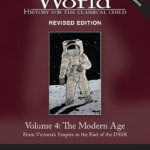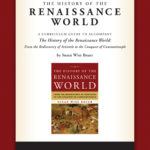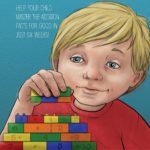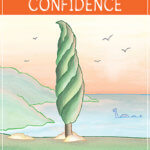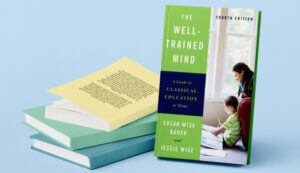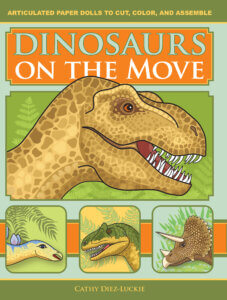
What is unit study? How do unit study methods compare with classical methods? And are there any weaknesses to the unit study approach?
A “unit study” integrates disciplines together, rather than dividing them into separate “subjects” to be pursued at different times during the school day. Literature, history, science, mathematics, art, music, history, and so on are all studied through their relationship to a core organizing principle. For example, the Konos character curriculum uses character qualities such as Obedience, Attentiveness, and Trust; history, literature, nature studies, science, and other subjects are then studied as they relate to the central character quality of the unit. Five in Row uses children’s literature classics as the organizing principle of their unit study; Learning Adventures uses chronological history. I have seen unit studies done on turtles, Little House on the Prairie, ancient Rome, pyramids, trains, and bread-making.
Unit study can be a wonderful method of learning. As a matter of fact, the classical education described in The Well-Trained Mind uses insights drawn from unit study. For example, we suggest reading literature that corresponds to the historical period you’re studying, so that literature and history become a mini-unit study organized around the chronological progression of history. And certainly the teaching methods we recommend in The Well-Trained Mind (narration, outlining, summarizing, keeping a time line, Socratic dialogue) can be integrated into a unit study program.
But most unit study programs aren’t “classical.”
Classical Education Distinctives
Classical education has three distinctives: it follows the pattern of the trivium, is language-focused rather than image-focused, and is centered around the story of history.
Note: just because a unit study isn’t “classical” doesn’t mean that it isn’t challenging, interesting, and academically excellent. Understanding the difference between unit study methods and classical methods can help you choose the teaching style that’s right for your family. You may decide that unit studies beat out strict classical education! But do be aware of the differences between these approaches, especially since several unit-study programs are now describing themselves as “classical” because they utilize classic literature.
The Pattern of the Trivium
Most unit study programs don’t follow the pattern of the trivium, in which the first years (“grammar stage years”) are devoted to memorization and fact-gathering, while middle-grade students focus on critical thinking and the study of logic. High school students concentrate on “rhetoric,” the art of graceful expression in speech and writing. (Click here for a full explanation of these three stages). In fact, many unit studies are designed for multi-level teaching, which tends to erase the very different learning needs of students in these three stages. Grammar-stage children need repetition and exploration; logic-stage students need to make connections and evaluate arguments; rhetoric students should begin to draw conclusions about ideas and respond with their own original thoughts.
However, if you decide to use a unit study, you can still pay attention to the three stages of classical learning. When you’re exploring unit-study material with children in grades 1-4, encourage them to tell back to you what they’re learning. Write these narrations down, or have them write their own narrations as soon as they’re capable of doing so. Make lists of important information you come across: dates, kings and rulers, scientific definitions. Ask the child to chant these lists as a way of fixing information in the child’s retentive memory. And keep concentrating on those basic skills: spelling, writing, math facts, and basic grammar (see “Concerns About Unit Studies,” below). Middle-grade students need to begin to recognize cause and effect in history, so have your middle-grade student keep a timeline of historical events, no matter what the organizing principle of your unit study is. Put scientists, writers, musicians, artists, kings, generals, and all important events on the time line; this will help the child organize her learning. Use some of the Critical Thinking Press materials on history, science, math, and literature to encourage the child’s critical thinking skills in all areas covered by the unit study. And use the discussion questions we list in The Well-Trained Mind to help the student think critically about the literature she encounters. High school students should write and speak about what they’re learning, even if that learning comes through unit study rather than through the study of great books. Even if you decide to use a unit study approach rather than a “strictly classical” approach, you can benefit from the techniques and resources of classical education.
Language-Centered Rather Than Image-Centered Learning
Unit studies qualify! It’s possible that a unit study could concentrate too much on kinesthetic learning (activities, field trips, etc.) at the expense of literature, but most unit studies I’ve seen do an excellent job of teaching through written language.
Centered Around the Story of History
The biggest difference between unit study and classical learning is the organizing principle of study. Unit studies can be centered on almost anything; classical learning chooses history as its center. In The Well-Trained Mind, we write:
To the classical mind, all knowledge is interrelated. Astronomy (for example) isn’t studied in isolation; it’s learned along with the history of scientific discovery, which leads into the church’s relationship to science and from there to the intricacies of medieval church history. The reading of the Odyssey leads the student into the consideration of Greek history, the nature of heroism, the development of the epic, and man’s understanding of the divine.
This is easier said than done. The world is full of knowledge, and finding the links between fields of study can be a mind-twisting task. A classical education meets this challenge by taking history as its organizing outline — beginning with the ancients and progressing forward to the moderns in history, science, literature, art and music. We suggest that the twelve years of education consist of three repetitions of the same four-year pattern: Ancients, Middle Ages, Renaissance and Reformation, and Modern Times. The child studies these four time periods at varying levels — simple for grades 1-4, more difficult in grades 5-8 (when the student begins to read original sources), and taking an even more complex approach in grades 9-12, when the student works through these time periods using original sources (from Homer to Hitler) and also has the opportunity to pursue a particular interest (music, dance, technology, medicine, biology, creative writing) in depth.
The other subject areas of the curriculum are linked to history studies. The student who is working on ancient history will read Greek and Roman mythology, the tales of the Iliad and Odyssey, early medieval writings, Chinese and Japanese fairy tales, and (for the older student) the classical texts of Plato, Herodotus, Virgil, Aristotle. She’ll read Beowulf, Dante, Chaucer, Shakespeare the following year, when she’s studying medieval and early Renaissance history. When the eighteenth and nineteenth centuries are studied, she starts with Swift (Gulliver’s Travels) and ends with Dickens; finally, she reads modern literature as she is studying modern history. The sciences are studied in a four-year pattern that roughly corresponds to the periods of scientific discovery: biology, classification and the human body (subjects known to the ancients); earth science and basic astronomy (which flowered during the early Renaissance); chemistry (which came into its own during the early modern period); and then basic physics and computer science (very modern subjects).
This pattern lends coherence to the study of history, science, and literature — subjects that are too often fragmented and confusing.
This use of history as the “central rail” of education keeps learning “on track.” Unit study can become fragmented and random if a firm organizing principle isn’t kept in mind. Units on turtles, Little House on the Prairie, pyramids, and trains can each contribute to the child’s learning — but what’s the overall pattern?
You’re more likely to have this difficulty if you write your own unit studies, since many popular unit curricula are fairly tightly organized around themes that carry over from unit to unit. As a matter of fact, your decision over what method to choose will depend partly on whether you’d rather center your study around history, character, literature, or some other theme.
Possible Difficulties With Unit Studies
I have two major concerns about unit study methods. Not all unit study curricula fall into the traps I describe below, but do keep them in mind as you’re evaluating unit study programs.
Many unit studies do not make a proper distinction between content and skill learning. Unit study enthusiasts insist that ALL learning is more effective when it is connected to something the child is interested in; thus, the skill areas (math facts, grammar, spelling, writing) are generally studied as they occur in connection with a content area (history, literature, science, art, music, etc.). But skills need to be taught somewhat differently than content areas. Skills require coherent presentation and regular practice to make them second nature. This is especially true in the early grades, when children need organized, systematic grammar, spelling, and writing programs so that these important skills can become easy. Because unit studies often try to connect skills to content learning, the skills sometimes end up taught in a disconnected and fragmentary manner. Consider supplementing your unit study learning with good, rigorous grammar, spelling, writing, and math programs. Don’t assume that your child will retain grammar and spelling skills and math facts without a certain amount of drill.
Each subject has its own internal logic. The humanities (history, literature, art, music, geography) work beautifully in unit study curricula, because they are interrelated: whichever subject is chosen as the center of the program, the others fit into it. And most unit study programs are centered around topics in the humanities. It’s my impression, though, that science and math tend to suffer in unit studies. Scientific learning builds on itself; mathematical learning progresses forward in a certain order that has nothing to do with history or literature. If you study science ONLY as it relates to literature (desert animal life one week, because you’re reading a book set in the desert; volcanoes the next week because you’re studying Pompeii; plants because you’re learning about medieval farming), science becomes an adjunct to history and literature, rather than a unified field of study with its own rules, laws, and conventions. The same is true of mathematics. Yes, it’s important to link scientific study to history, which is why we suggest doing science in the order described above, and why we further recommend the reading of scientific biographies for history. But it’s equally important to understand science on its own terms. The same is true of mathematics. If I were using a unit study, I would use the math and science elements of the unit study program as supplemental to a separate science course; I would not rely on them as my main science and math study. This is not as important for grades 1-4, when it is more important that children become familiar with — and excited about — scientific topics, than it is that they understand the exact relationships between scientific ideas. But I think students in grades 5-8 and 9-12 should study science and history for what they are — two separate fields of knowledge that touch and interrelate at NUMEROUS points, but which nevertheless have their own systems of knowledge. (If, on the other hand, you’re not actually going to get around to doing a good separate science course — and you all know who you are — a unit-study approach is certainly better than nothing.)
Recommended Products
-
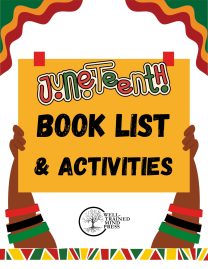
Juneteenth Booklist & Activities
0 out of 5$0.00 Add to cart -
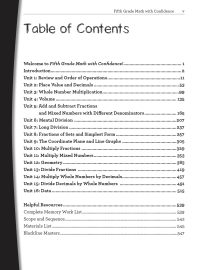
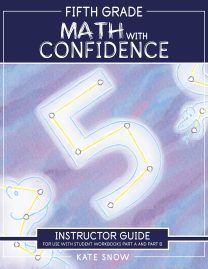
Fifth Grade Math with Confidence Instructor Guide
0 out of 5Starting at:$36.95Original price was: $36.95.$27.71Current price is: $27.71. Select options -
Sale!

Hansel & Gretel and Other Stories: Downloadable MP3
0 out of 5$12.95Original price was: $12.95.$9.71Current price is: $9.71. Add to cart -
Sale!
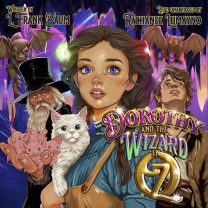
Dorothy and the Wizard in Oz: Downloadable MP3
0 out of 5$25.95Original price was: $25.95.$19.46Current price is: $19.46. Add to cart -
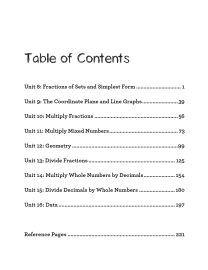 Sale!
Sale!
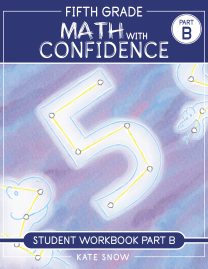
Fifth Grade Math with Confidence Student Workbook B
0 out of 5$16.46 – $21.56 Select options This product has multiple variants. The options may be chosen on the product page -
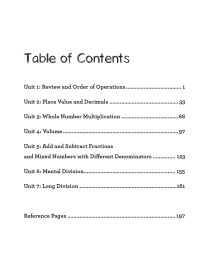 Sale!
Sale!
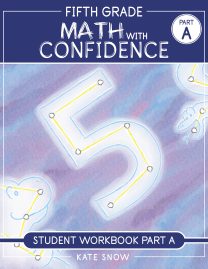
Fifth Grade Math with Confidence Student Workbook A
0 out of 5$16.46 – $21.56 Select options This product has multiple variants. The options may be chosen on the product page
ABOUT THE AUTHOR
Susan Wise Bauer
Join over 100,000 homeschooling families
For the latest offers, educational insights, products and more.
By joining you agree to our privacy policy.



